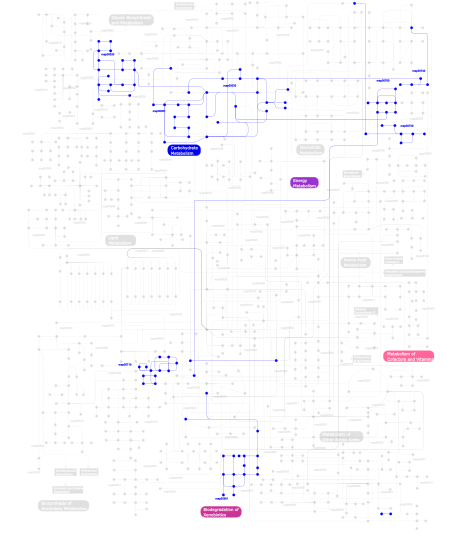LMWPcLow molecular weight phosphatase family |
|---|
| SMART accession number: | SM00226 |
|---|---|
| Description: | - |
| Interpro abstract (IPR023485): | Protein tyrosine (pTyr) phosphorylation is a common post-translational modification which can create novel recognition motifs for protein interactions and cellular localisation, affect protein stability, and regulate enzyme activity. Consequently, maintaining an appropriate level of protein tyrosine phosphorylation is essential for many cellular functions. Tyrosine-specific protein phosphatases (PTPase; EC 3.1.3.48 ) catalyse the removal of a phosphate group attached to a tyrosine residue, using a cysteinyl-phosphate enzyme intermediate. These enzymes are key regulatory components in signal transduction pathways (such as the MAP kinase pathway) and cell cycle control, and are important in the control of cell growth, proliferation, differentiation and transformation [ (PUBMED:9818190) (PUBMED:14625689) ]. The PTP superfamily can be divided into four subfamilies [ (PUBMED:12678841) ]:
Based on their cellular localisation, PTPases are also classified as:
All PTPases carry the highly conserved active site motif C(X)5R (PTP signature motif), employ a common catalytic mechanism, and share a similar core structure made of a central parallel beta-sheet with flanking alpha-helices containing a beta-loop-alpha-loop that encompasses the PTP signature motif [ (PUBMED:9646865) ]. Functional diversity between PTPases is endowed by regulatory domains and subunits. This entry represents the low molecular weight (LMW) protein-tyrosine phosphatases (or acid phosphatase), which act on tyrosine phosphorylated proteins, low-MW aryl phosphates and natural and synthetic acyl phosphates [ (PUBMED:1587862) (PUBMED:1304913) ]. The structure of a LMW PTPase has been solved by X-ray crystallography [ (PUBMED:8052313) ] and is found to form a single structural domain. It belongs to the alpha/beta class, with 6 alpha-helices and 4 beta-strands forming a 3-layer alpha-beta-alpha sandwich architecture. |
| Family alignment: |
There are 43599 LMWPc domains in 43553 proteins in SMART's nrdb database.
Click on the following links for more information.
- Evolution (species in which this domain is found)
- Disease (disease genes where sequence variants are found in this domain)
- Metabolism (metabolic pathways involving proteins which contain this domain)
- Structure (3D structures containing this domain)
- Links (links to other resources describing this domain)








































































